Frontier Centre for Public Policy
Federal government’s bloated bureaucracy needs an immediate overhaul
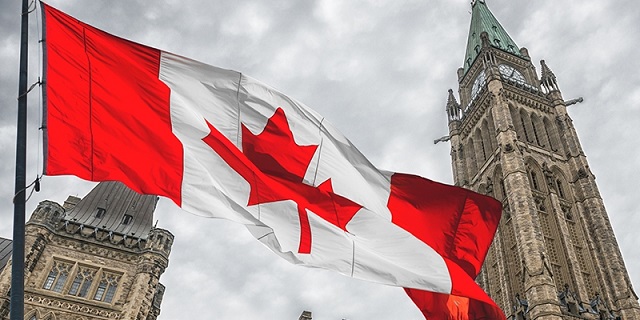
From the Frontier Centre for Public Policy
By David Leis
I recently had the pleasure of speaking with the Honourable Preston Manning about the ever-growing size of Canada’s federal bureaucracy. Manning, a seasoned politician with an impressive legacy of public service, recently wrote a compelling column urging the next government to rein in the federal bureaucracy.
Our conversation highlighted the need for a strategic approach to managing the state’s size and ensuring efficient and effective government operations and democratic accountability. This issue is relevant to Canadians as the size of government in Canada continues to increase at historic levels and acts as a major impediment to our nation’s productivity, standard of living and quality of life.
The size of the state has also led to a change in our culture. Some assume that the government will do everything, which, of course, has never worked.
During our conversation, Manning highlighted the dramatic growth of the federal civil service, which has nearly doubled during the Trudeau years. This expansion, he said, poses a significant challenge for any new government trying to control this vast machinery by elected representatives. His central argument was clear: a new government must be prepared with a solid plan to manage and, where necessary, reduce the federal bureaucracy’s size to ensure its effectiveness and that it serves the needs of Canadians.
One of his primary suggestions was a return to merit-based hiring. The current emphasis on diversity, equity, and inclusion, he pointed out, sometimes comes at the expense of efficiency and effectiveness. While acknowledging the importance of a diverse workforce, Manning stressed that competence and capability, not ideology, should be the core criteria for hiring civil servants. This approach, he said, would ensure that the government is staffed by professionals who can deliver high-quality public services.
Privatization also came up as a key theme in our conversation. Manning pointed out that certain government functions could be better managed by the private sector. He said that by contracting out services that the private sector can deliver more cost-effectively, the government can reduce its size and focus on its core responsibilities. This shift would not only decrease public expenditure but also enhance the efficiency of service delivery to the public.
We also discussed the issue of federal encroachment into provincial jurisdictions and the need for it to focus on its own responsibilities, many of which are underperforming. The Trudeau government has been overstepping its constitutional boundaries in areas like healthcare, natural resources, and municipal governance. By respecting provincial jurisdictions, the federal government could reduce its role and the size of its bureaucracy while empowering those levels of government closer to the people. This decentralization would enable the provincial governments to manage their affairs more effectively, leading to a more balanced and efficient federation.
Building public support for reducing the size of the government was another crucial point in our conversation as Canadians struggle with high taxation and affordability. Survey after survey suggests a low level of trust in government as they witness high levels of deficits and debt as their standard of living continues to fall. Manning pointed out that, during the formation of the Reform Party, there was initially little public support for balancing the budget. However, through persistent efforts, public awareness and support for fiscal responsibility significantly increased. Similar efforts are needed today, he said, to educate the public about the importance of controlling government size and spending to serve Canadians better.
Our conversation also delved into the rule of law and the need for greater transparency to the public to ensure stronger accountability. Canada has one of the most secretive approaches to handling government documents in the Western world. Many documents are held indefinitely when they should be released publicly. Ironically, this secrecy has created a challenge for historians who seek to research past government decisions and can find few original documents because they are not public.
Manning also recommended periodically reviewing programs and either renewing or discontinuing them based on their effectiveness. This approach, he said, would enhance accountability and prevent the perpetuation of ineffective programs that no longer serve any purpose.
A particularly striking part of our discussion was the concept of a vertical political culture, where an elite class wields significant power, often at the expense of ordinary citizens. Manning argued that this description of elites and power is more relevant today than the traditional left-right political spectrum. The public must elect representatives committed to empowering citizens rather than perpetuating elite control, particularly within a massive, complex state bureaucracy.
Manning urged voters to ask candidates specific questions about how they plan to reduce the size of the federal civil service and manage public spending. By holding elected officials accountable, citizens can ensure that their concerns are addressed and that the government remains responsive to their needs, he said.
My discussion with Preston Manning highlighted the urgent need for strategic planning and public engagement in managing the size of Canada’s federal bureaucracy to ensure democratic control. His call for a return to merit-based hiring, increased privatization, respect for provincial jurisdictions, and greater transparency offers a roadmap for a more efficient and effective government.
As Canada faces increasing fiscal challenges and public dissatisfaction, his insights provide a timely reminder of the importance of prudent governance and active citizenship.
David Leis is the Frontier Centre for Public Policy’s vice president for development and engagement and host of the Leaders on the Frontier podcast.
Business
BC Ferries And Beijing: A Case Study In Policy Blindness
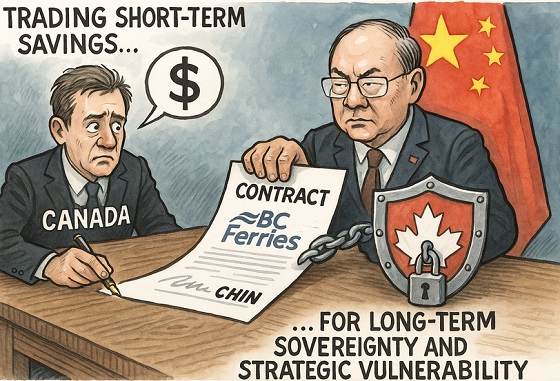
From the Frontier Centre for Public Policy
Scott McGregor warns BC Ferries’ contract with a Chinese state-owned shipbuilder reveals Canada’s failure to align procurement with national security. It is trading short-term savings for long-term sovereignty and strategic vulnerability.
BC Ferries’ recent decision to award the construction of four new vessels to China Merchants Industry (Weihai), a state-owned shipyard under the Chinese Communist Party (CCP), is a cautionary tale of strategic policy failure. While framed as a cost-effective solution to replace aging vessels, the agreement reveals a more critical issue: Canada’s persistent failure to align vital infrastructure procurement with national security and economic resilience.
The situation goes beyond transportation. It is a governance failure at the intersection of trade, security, and sovereignty.
Outsourcing Sovereignty
China Merchants Industry is part of a sprawling state-owned conglomerate, closely connected to the CCP. It is not merely a commercial player; it is a geopolitical actor. In China, these organizations thrive on a unique blend of state subsidies, long-term strategic direction, and complex corporate structures that often operate in the shadows. This combination grants them a significant competitive edge, allowing them to navigate the business landscape with an advantage that many try to replicate but few can match.
The same firms supplying ferries to BC are also building warships for the People’s Liberation Army Navy. That alone should give pause.
Yet BC Ferries, under provincial oversight, proceeded without meaningful scrutiny of these risks. No Canadian shipyards submitted bids due to capacity constraints and a lack of strategic investment. But choosing a Chinese state-owned enterprise by default is not a neutral act. It is the consequence of neglecting industrial policy.
Hybrid Risk, Not Just Hybrid Propulsion
China’s dominance in shipbuilding, now over 60% of global orders, has not occurred by chance. It is the result of state-driven market distortion, designed to entrench foreign dependence on Chinese industrial capacity.
Once that dependency forms, Beijing holds leverage. It can slow parts shipments, withhold technical updates, or retaliate economically in response to diplomatic friction. This is not speculative; it has already happened in sectors such as canola, critical minerals, and telecommunications.
Ordering a ferry, on its face, might seem apolitical. But if the shipbuilder is state-owned, its obligations to the CCP outweigh any commercial contract. That is the nature of hybrid threats to security: they appear benign until they are not.
Hybrid warfare combines conventional military force with non-military tactics (such as cyber attacks, disinformation, economic coercion, and the use of state-owned enterprises) to undermine a target country’s stability, influence decisions, or gain strategic control without resorting to open conflict. It exploits legal grey zones and democratic weaknesses, making threats appear benign until they’ve done lasting damage.
A Policy Void, Not Just a Procurement Gap
Ottawa designed its National Shipbuilding Strategy to rebuild Canadian capability, but it has failed to scale quickly enough. The provinces, including British Columbia, have been left to procure vessels without the tools or frameworks to evaluate foreign strategic risk. Provincial procurement rules treat a state-owned bidder the same as a private one. That is no longer defensible.
Canada must close this gap through deliberate, security-informed policy. Three steps are essential for the task:
Ottawa should mandate National Security reviews for critical infrastructure contracts. Any procurement involving foreign state-owned enterprises must trigger a formal security and economic resilience assessment. This should apply at the federal and provincial levels.
Secondly, when necessary, Canada should enhance its domestic industrial capabilities through strategic investments. Canada cannot claim to be powerless when there are no local bids available. Federal and provincial governments could collaborate to invest in scalable civilian shipbuilding, in addition to military contracts. Otherwise, we risk becoming repeatedly dependent on external sources.
Canada should enhance Crown oversight by implementing intelligence-led risk frameworks. This means that agencies, such as BC Ferries, must develop procurement protocols that are informed by threat intelligence rather than just cost analysis. It also involves incorporating security and foreign interference risk indicators into their Requests for Proposals (RFPs).
The Cost of Strategic Amnesia
The central point here is not only about China; it is primarily about Canada. The country needs more strategic foresight. If we cannot align our economic decisions with our fundamental security posture, we will likely continue to cede control of our critical systems, whether in transportation, healthcare, mining, or telecommunications, to adversarial regimes. That is a textbook vulnerability in the era of hybrid warfare.
BC Ferries may have saved money today. But without urgent policy reform, the long-term cost will be paid in diminished sovereignty, reduced resilience, and an emboldened adversary with one more lever inside our critical infrastructure.
Scott McGregor is a senior security advisor to the Council on Countering Hybrid Warfare and Managing Partner at Close Hold Intelligence Consulting Ltd.
Bjorn Lomborg
The Physics Behind The Spanish Blackout

From the Frontier Centre for Public Policy
Madrid knew solar and wind power were unreliable but pressed ahead anyway
When a grid failure plunged 55 million people in Spain and Portugal into darkness at the end of April, it should have been a wake-up call on green energy. Climate activists promised that solar and wind power were the future of cheap, dependable electricity. The massive half-day blackout shows otherwise. The nature of solar and wind generation makes grids that rely on them more prone to collapse—an issue that’s particularly expensive to ameliorate.
As I wrote in these pages in January, the data have long shown that environmentalists’ vision of cheap, reliable solar and wind energy was a mirage. The International Energy Agency’s latest cost data continue to underscore this: Consumers and businesses in countries with almost no solar and wind on average paid 11 U.S. cents for a kilowatt hour of electricity in 2023, but costs rise by more than 4 cents for every 10% increase in the portion of a nation’s power generation that’s covered by solar and wind. Green countries such as Germany pay 34 cents, more than 2.5 times the average U.S. rate and nearly four times China’s.
Prices are high in no small part because solar and wind require a duplicate backup energy system, often fossil-fuel driven, for when the sun doesn’t shine or the wind doesn’t blow. The Iberian blackout shows that the reliability issues and costs of solar and wind are worse than even this sort of data indicates.
Grids need to stay on a very stable frequency—generally 50 Hertz in Europe—or else you get blackouts. Fossil-fuel, hydro and nuclear generation all solve this problem naturally because they generate energy by powering massive spinning turbines. The inertia of these heavy rotating masses resists changes in speed and hence frequency, so that when sudden demand swings would otherwise drop or hike grid frequency, the turbines work as immense buffers. But wind and solar don’t power such heavy turbines to generate energy. It’s possible to make up for this with cutting-edge technology such as advanced inverters or synthetic inertia. But many solar and wind farms haven’t undergone these expensive upgrades. If a grid dominated by those two power sources gets off frequency, a blackout is more likely than in a system that relies on other energy sources.
Spain has been forcing its grid to rely more on unstable renewables. The country has pursued an aggressive green policy, including a commitment it adopted in 2021 to achieve “net zero” emissions by 2050. The share of solar and wind as a source of Spain’s electricity production went from less than 23% in 2015 to more than 43% last year. The government wants its total share of renewables to hit 81% in the next five years—even as it’s phasing out nuclear generation.
Just a week prior to the blackout, Spain bragged that for the first time, renewables delivered 100% of its electricity, though only for a period of minutes around 11:15 a.m. When it collapsed, the Iberian grid was powered by 74% renewable energy, with 55% coming from solar. It went down under the bright noon sun. When the Iberian grid frequency started faltering on April 28, the grid’s high proportion of solar and wind generation couldn’t stabilize it. This isn’t speculation; it’s physics. As the electricity supply across Spain collapsed, Portugal was pulled along, because the two countries are tightly interconnected through the Iberian electricity network.
Madrid had been warned. The parent company of Spain’s grid operator admitted in February: “The high penetration of renewable generation without the necessary technical capabilities in place to keep them operating properly in the event of a disturbance . . . can cause power generation outages, which could be severe.”
Yet the Spanish government is still in denial. Even while admitting that he didn’t know the April blackout’s cause, Prime Minister Pedro Sánchez insisted that there was “no empirical evidence” that renewables were to blame and that Spain is “not going to deviate a single millimeter” from its green energy ambitions.
Unless the country—and its neighbors—are comfortable with an increased risk of blackouts, this will require expensive upgrades. A new Reuters report written with an eye to the Iberian blackout finds that for Europe as a whole this would cost trillions of dollars in infrastructure updates. It’s possible that European politicians can talk voters into eating that cost. It’ll be impossible for India or nations in Africa to follow suit.
That may be unwelcome news to Mr. Sánchez, but even a prime minister can’t overcome physics. Spain’s commitment to solar and wind is forcing the country onto an unreliable, costly, more black-out-prone system. A common-sense approach would hold off on a sprint for carbon reductions and instead put money toward research into actually reliable, affordable green energy.
Unfortunately for Spain and those countries unlucky enough to be nearby, the Spanish energy system—as one Spanish politician put it—“is being managed with an enormous ideological bias.”
Bjorn Lomborg is president of the Copenhagen Consensus, a visiting fellow at Stanford University’s Hoover Institution and author of “Best Things First.”
-

 Automotive1 day ago
Automotive1 day agoPower Struggle: Electric vehicles and reality
-

 Alberta5 hours ago
Alberta5 hours agoAlberta Independence Seekers Take First Step: Citizen Initiative Application Approved, Notice of Initiative Petition Issued
-

 Automotive1 day ago
Automotive1 day agoElectric vehicle sales are falling hard in BC, and it is time to recognize reality.
-
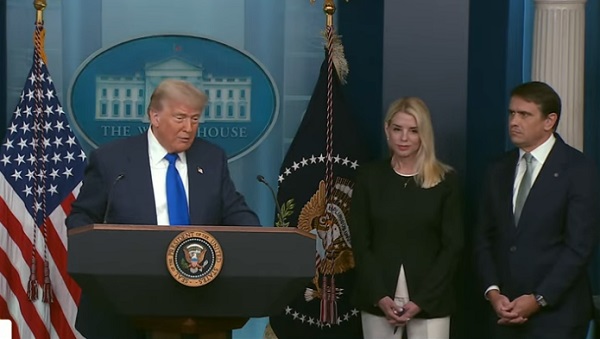
 Business1 day ago
Business1 day agoTrump on Canada tariff deadline: ‘We can do whatever we want’
-
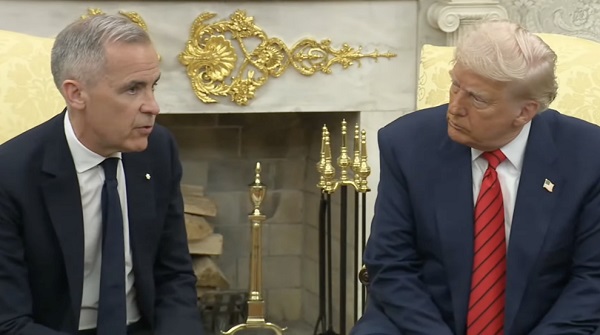
 Business7 hours ago
Business7 hours agoCanada Caves: Carney ditches digital services tax after criticism from Trump
-

 Brownstone Institute2 days ago
Brownstone Institute2 days agoFDA Exposed: Hundreds of Drugs Approved without Proof They Work
-

 Crime7 hours ago
Crime7 hours agoSuspected ambush leaves two firefighters dead in Idaho
-
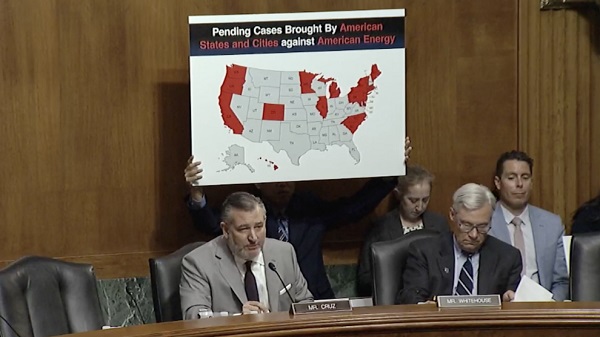
 Energy1 day ago
Energy1 day agoChina undermining American energy independence, report says



